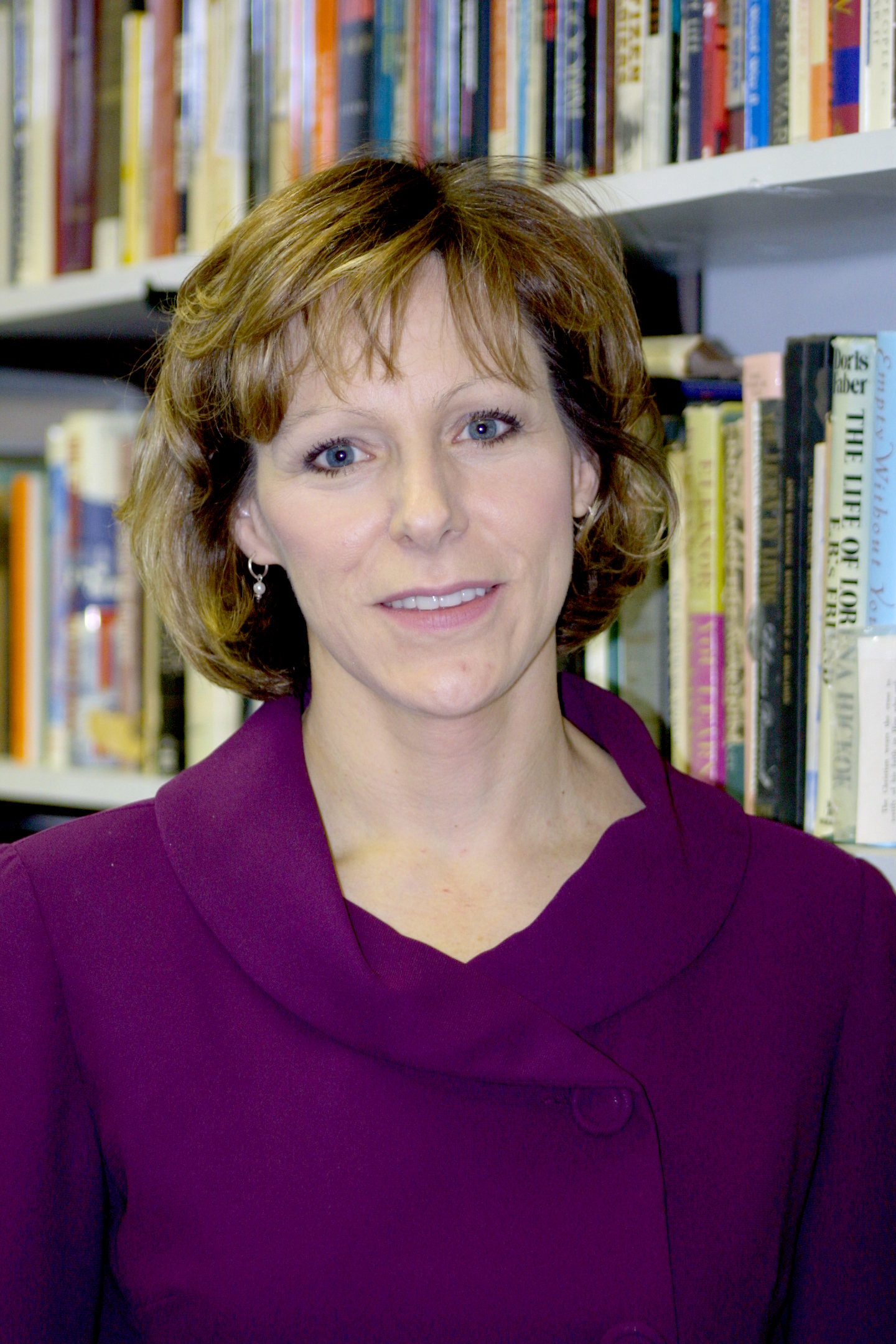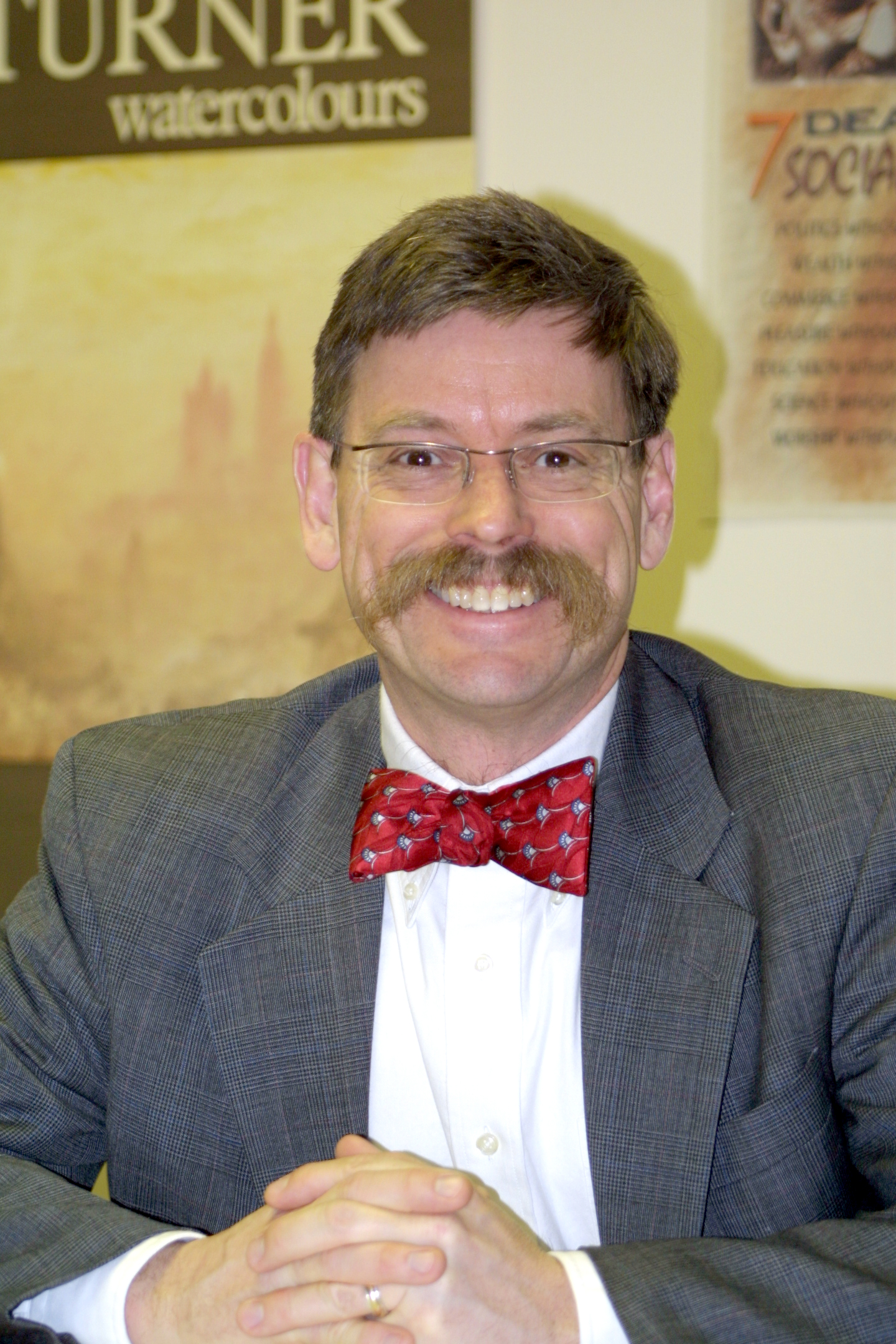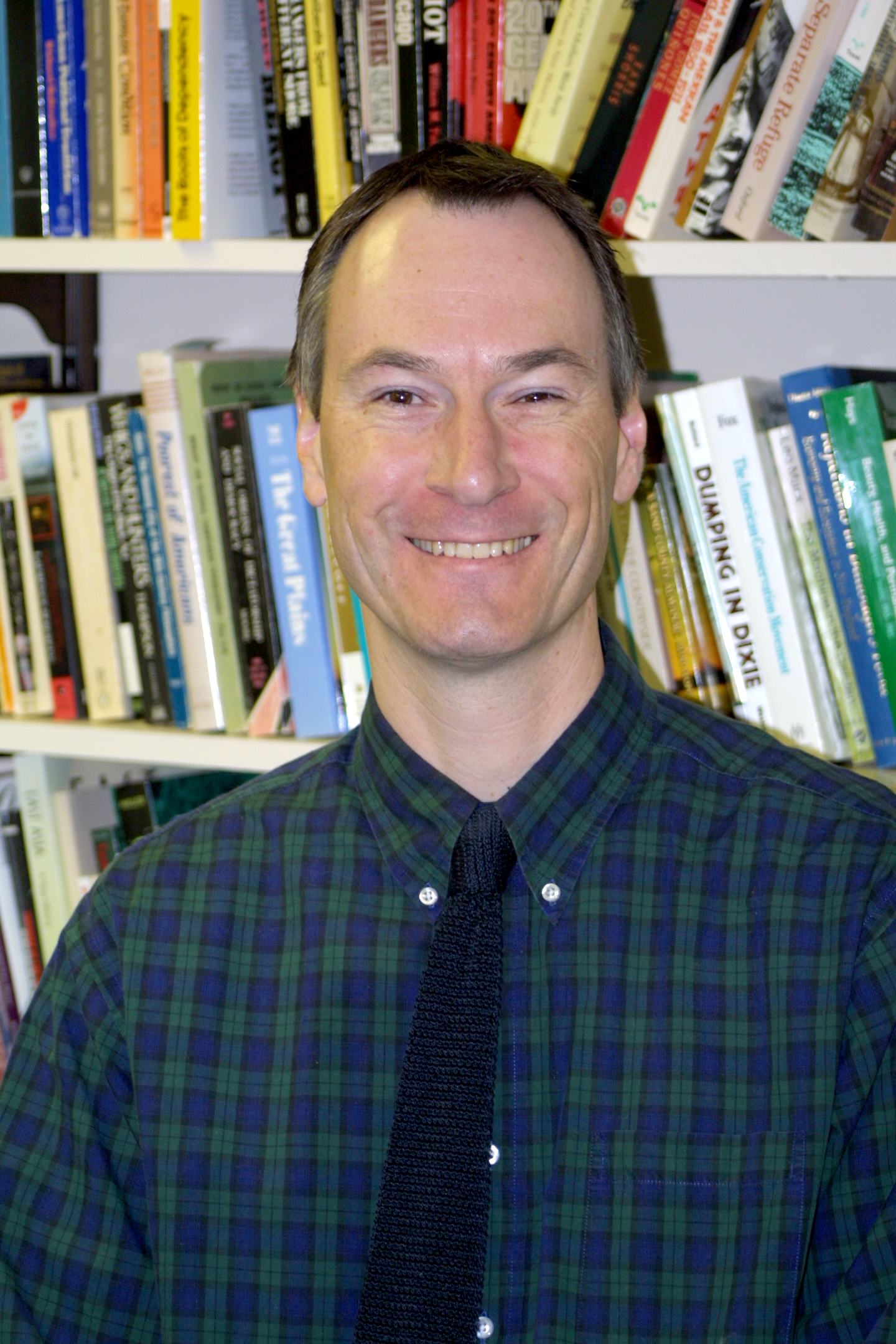ABOUT THE DEPARTMENT
: The history department faculty is a collection of very diverse talents, viewpoints, and teaching styles. Several have been singled out as the Professor of the Year: Urban in 1986 and Spitz in 1987 (the first two years the Burlington Northern Prize for Distinguished Teaching was presented--discontinued after the grant expired), Stacy Cordery by the Student Association in 1997 and 1998; the doors of Stacy Cordery, Simon Cordery, and David Suda have been decorated by student organizations for outstanding teaching; the publications and public presentations of scholarly research/musical talent are numerous and diverse (see individual faculty entries). In 2005 Tom Sienkewicz won the first newly established prize for scholarly publications.
 |
History Department Fall 2005 from left Tom Sienkewicz, Tom Best, Simon Cordery, Stacy Cordery, Amy Caldwell de Farias, Dan Barclay, William Urban |
| Photos from 2006 below |
With 70+ declared majors, 25 juniors in the Historiography course, History is among the most popular departments in the college. |
| |


Stacy Cordery
Amy Caldwell de Farias |

 
Simon Cordery
Dan Barclay
William Urban with one of the 2005 roses from his garden |
Student evaluations show great satisfaction with each instructor and with the department's program as a whole. (To contact students, click here © ) Graduates indicate that they have been very adequately prepared for teaching, graduate school, and the world of work. For future teachers, perhaps our most popular career choice, the history program covers the most essential "culture areas" needed for by middle and high school teachers: American, European, World, and Illinois. Photo: Tom Best at his day job (where some of our students do their practice teaching).

The skills of the historian--reading widely, evaluating sources, organizing information, and explaining in understandable ways the complex activities of human beings--are useful in a variety of careers.
Classes range in size from 1-30 and reflect a wide range of intellectual approaches to the field of history: political-social; gender and minorities; intellectual-cultural. The program is organized so that one course will concentrate on one collection of skills, another on others, so that by graduation each major has had a wide variety of experiences in subject materials, source materials, and methods of study: Requirements for the Major, Minor, and Teacher Education.
The department has always been a leader in technological innovation, back from the days at the beginning of the twentieth century when the use of maps was rare! Past department members have been famous for slide shows and sparkling dialogue (the Mary Crow Room is a testimony to this), for the use of audio-visual materials (especially out-of-class videos and movies co-ordinated with lectures and discussions), and computer literacy (introduced c. 1972, expected of majors since 1981); and more recently power-point presentations for lectures. This has been done without abandoning the basics: the department requires a good deal of reading and many visits to the library. There is a strong emphasis on good writing, which is achieved by many short writing assignments and faculty feedback. Unusual in modern higher education is the department's emphasis on original sources--especially with the government documents depository (the oldest in Illinois) in the Hewes Library.
The staff has a variety of duties outside the department: Simon Cordery was the women's soccer coach (1994-2000) and organizer of the Faculty Interdisciplinary Research Group; David Suda is Concertmaster of the Knox-Galesburg Symphony and member of the Monmouth Trio; Stacy Cordery is the College Archivist and coordinator of the Women's Studies Program; Tom Best, who teaches Secondary School Methods and Curriculum and the Civil War course to packed classrooms two evenings each week is a full-time Junior High School teacher who has supervised a number of our student teachers.
William Urban has also been teaching history summers on the Cultural Studies Program of Eastern Michigan University, carrying his backpack six weeks from London to Paris, Berlin, Prague, Vienna, Salzburg, Munich, Venice, Milan, Florence and Rome. He took students and faculty to Berlin in March of 2002, was in Russia during that summer, and took students to Roman Germany in March of 2003, Düsseldorf-Köln in 2004 and Munich in 2005;
another trip to Düsseldorf-Köln is scheduled for spring break in 2007.
Simon Cordery visited our exchange university in Greece in 2004, Stacy Cordery visited our exchange university in Sweden in early 2005.
 Urban and the Corderys have their Ph.D. degrees from the University of Texas. But they did not study under the same professors. When Urban went to the university, they did not even have to add "at Austin." The Corderys were originally a Yankee and a Brit. Suda comes from Florida. The result is that the department is good at explaining Southern culture, and has an instinctive understanding of Southern politicians, especially those from Texas.
Urban and the Corderys have their Ph.D. degrees from the University of Texas. But they did not study under the same professors. When Urban went to the university, they did not even have to add "at Austin." The Corderys were originally a Yankee and a Brit. Suda comes from Florida. The result is that the department is good at explaining Southern culture, and has an instinctive understanding of Southern politicians, especially those from Texas.
Amy Caldwell de Farias joined the staff in 2005 to offer courses on Mexico and Latin America.
David Suda, though officially transferred to Philosophy and Religious Studies, continues to offer courses in the history department. See the History Department in 1999.
Tom Sienkewicz teaches courses on ancient societies.
 March
17, 2006
March
17, 2006
Front row, left to right: Dan Barclay, Amy Caldwell de
Farias, Stacy Cordery, Simon Cordery;
Back row: William Urban, Tom Sienkewicz, David Suda.
Missing: Tom Best.
Return to History Department Home Page







 Urban and the Corderys have their Ph.D. degrees from the University of Texas. But they did not study under the same professors. When Urban went to the university, they did not even have to add
Urban and the Corderys have their Ph.D. degrees from the University of Texas. But they did not study under the same professors. When Urban went to the university, they did not even have to add 